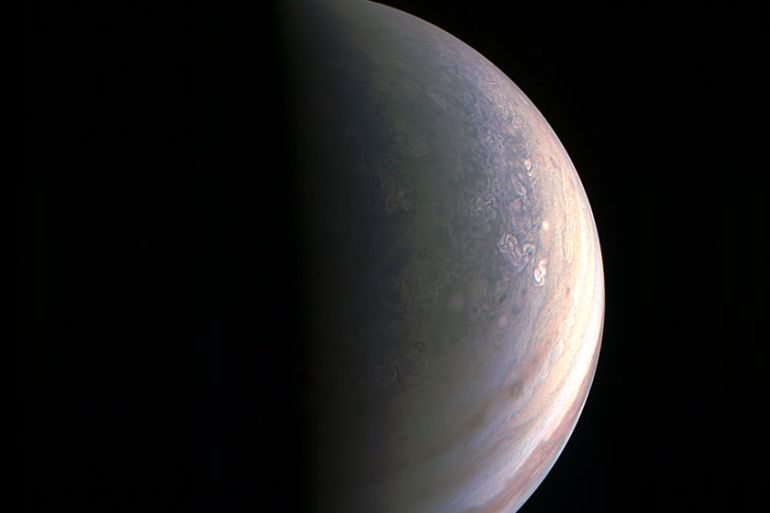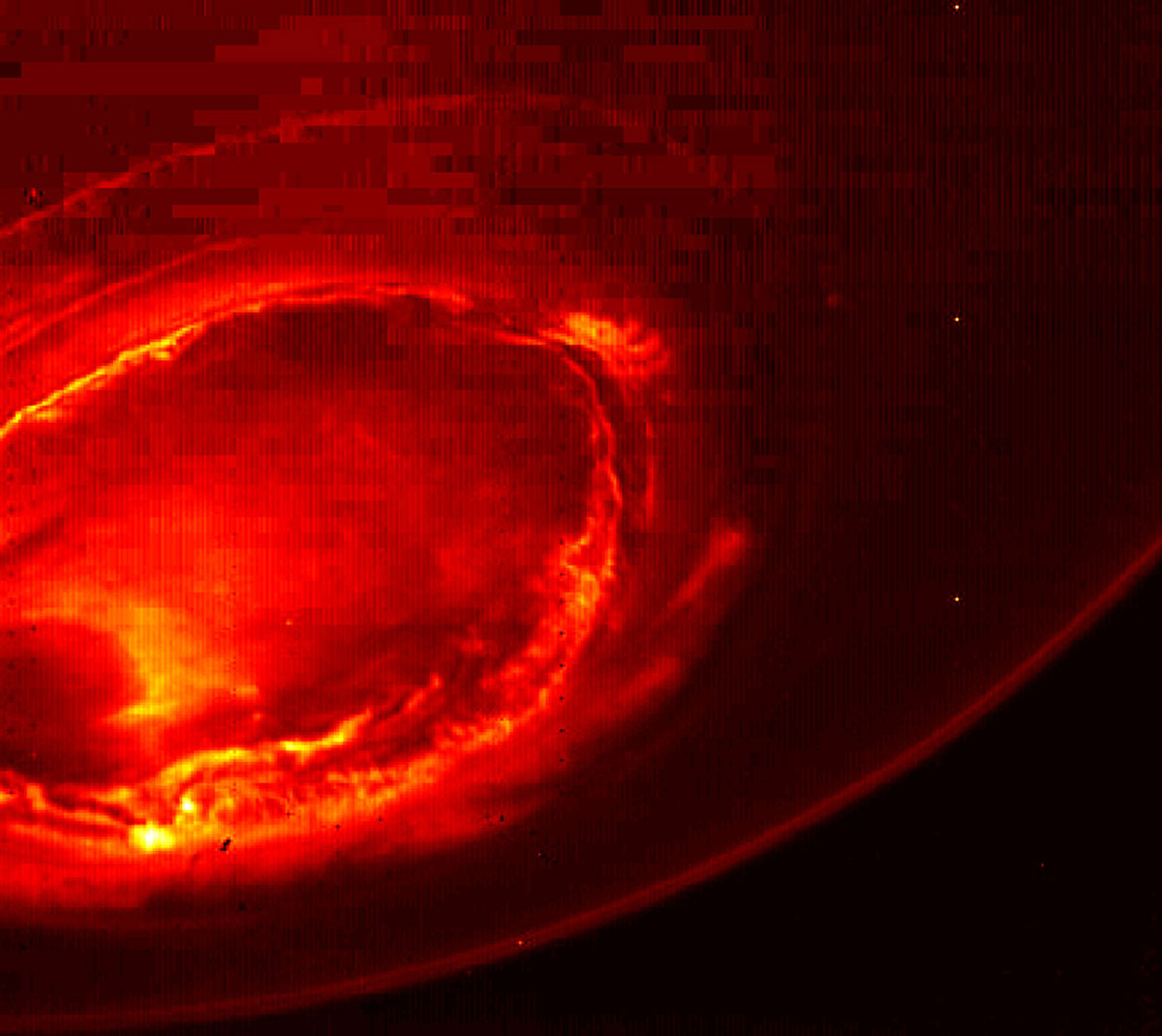NASA: Jupiter storms like nothing we’ve seen before
US space agency releases pictures of first flyby of Juno probe, showing storms unlike any other in the solar system.

United States space agency NASA has released the first close-up images of Jupiter’s poles, saying it is unlike anything seen before in the solar system. The images were captured during a six-hour flyby of the Juno space probe on August 27.
“First glimpse of Jupiter’s north pole, and it looks like nothing we have seen or imagined before. This image is hardly recognisable as Jupiter,” principal investigator of Juno, Scott Bolton, said of the pictures of Jupiter’s north pole on the NASA website.
Keep reading
list of 4 itemsPhotos: Mexico, US, Canada mesmerised by rare total solar eclipse
Moment total solar eclipse occurs in North America
Millions across North America await total solar eclipse
The space agency also released an infrared image of the south pole of the solar system’s largest planet. Due to the way both earth and Jupiter are positioned, the south pole of the gas giant can hardly be examined, so Juno’s pictures give scientists a first glimpse of a previously unknown part of the planet.

Jupiter, which has an atmosphere that mainly consists of hydrogen and helium, is known for its Great Red Spot, a storm bigger than earth that has been raging for hundreds of years. The pictures released by NASA show storms and weather systems never seen before.
“The largest planet in our solar system is truly unique. We have 36 more flybys to study just how unique it really is,” Bolton commented after the spacecraft completed its first flyby, which took a day and a half.
Besides capturing images of both poles, Juno also recorded infrared video and audio of the largest planet in our solar system.
“Jupiter is talking to us in a way only gas giant worlds can,” co-investigator Bill Kurth said of the radio emissions picked up by Juno. It is the first time scientists have been able to analyse these radio signals in such detail.
The Juno space probe was launched five years ago and recently made the closest approach to Jupiter of any spacecraft ever.
Flying about 4,200km above the gas giant’s clouds, the craft travels about 208,000 kilometres per hour with respect to the planet. In total, the $1.1bn mission will last 20 months.